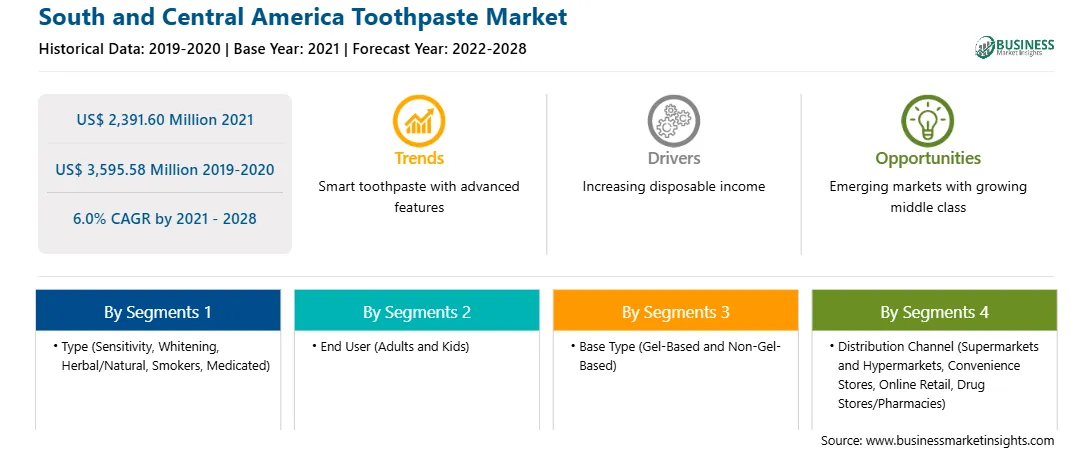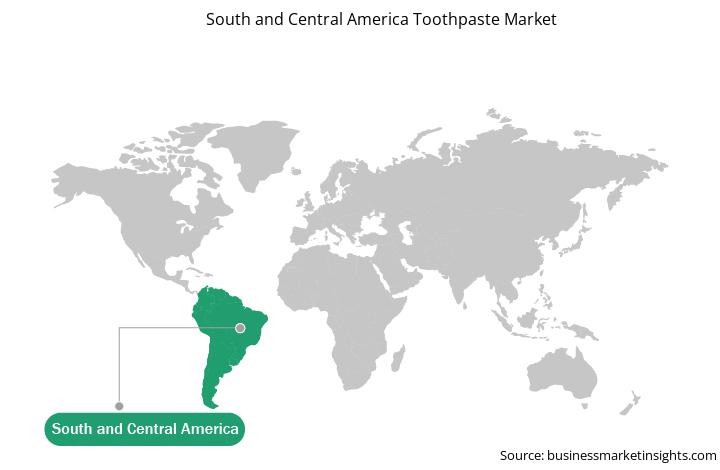Surging Demand for Sustainable Toothpaste
The demand for sustainably produced products has been increasing globally in recent years. Recent studies indicate heightened consumer awareness around the concept, which, in turn, is driving the demand for sustainably sourced and manufactured products. In addition to this, manufacturers are now also looking to locally source their ingredients to reduce emissions through transportation. Moreover, sustainable products and packaging have emerged as a top priority as consumers show more interest in their environmental footprint and overall food system. A 2020 Study from Shorr Packaging found that two-thirds of shoppers who have made changes in their purchasing behaviors during the pandemic are certainly paying more attention to packaging. Also, 58% of survey respondents reported being "likely" to select products that use reusable or recyclable packaging. This is particularly true among younger consumers. Furthermore, millennials are more likely to purchase sustainable products than other generations, while Gen Z is developing as a generation that is willing to spend more on products that meet their sustainability standards. By 2025, Unilever plans to shift its complete oral care portfolio, including Pepsodent, Signal, and Close Up, to new recyclable tubes. The move means about 12,000 tons of plastic will become recyclable, enough plastic to circle the Earth 11 times. According to recent research, there is an increasing demand for sustainable toothpaste. Over the last few years, there has been an eleven-fold upsurge in the number of monthly searches for sustainable oral care products, which is likely to create growth potential for the market. Also, the increased demand for toothpaste products, along with new product developments, is strongly complementing the market's growth.
Market Overview
In the toothpaste market, South and Central America is the fastest-growing region. Brazil is one of the largest consumers of toothpaste in the region. Brazil has the largest oral hygiene market in the world with potential growth opportunities. In Brazil, oral care products such as toothpaste and toothbrush have high penetration in society. Moreover, the high consumption of coffee creates a demand for whitening toothpaste in the region. The players operating in the region offer a wider range of oral care products, including toothpaste, to the local consumers. There are growing promotional activities on oral health and hygiene by various brands, which further contribute to the growth of the toothpaste market in the region.
Strategic insights for the South and Central America Toothpaste provides data-driven analysis of the industry landscape, including current trends, key players, and regional nuances. These insights offer actionable recommendations, enabling readers to differentiate themselves from competitors by identifying untapped segments or developing unique value propositions. Leveraging data analytics, these insights help industry players anticipate the market shifts, whether investors, manufacturers, or other stakeholders. A future-oriented perspective is essential, helping stakeholders anticipate market shifts and position themselves for long-term success in this dynamic region. Ultimately, effective strategic insights empower readers to make informed decisions that drive profitability and achieve their business objectives within the market. The geographic scope of the South and Central America Toothpaste refers to the specific areas in which a business operates and competes. Understanding local distinctions, such as diverse consumer preferences (e.g., demand for specific plug types or battery backup durations), varying economic conditions, and regulatory environments, is crucial for tailoring strategies to specific markets. Businesses can expand their reach by identifying underserved areas or adapting their offerings to meet local demands. A clear market focus allows for more effective resource allocation, targeted marketing campaigns, and better positioning against local competitors, ultimately driving growth in those targeted areas.South and Central America Toothpaste Strategic Insights

South and Central America Toothpaste Report Scope
Report Attribute
Details
Market size in 2021
US$ 2,391.60 Million
Market Size by 2028
US$ 3,595.58 Million
Global CAGR (2021 - 2028)
6.0%
Historical Data
2019-2020
Forecast period
2022-2028
Segments Covered
By Type
By End User
By Base Type
By Distribution Channel
Regions and Countries Covered
South and Central America
Market leaders and key company profiles
South and Central America Toothpaste Regional Insights

South & Central America Toothpaste Market Segmentation
The South & Central America toothpaste market is segmented into type, end user, distribution channel, and country.
3M; Colgate-Palmolive Company; GlaxoSmithKline plc.; Henkel AG & COMPANY, KGAA; Procter & Gamble; Sunstar Suisse S.A.; The Himalaya Drug Company; and Unilever are the leading companies operating in the toothpaste market in the region.
The South and Central America Toothpaste Market is valued at US$ 2,391.60 Million in 2021, it is projected to reach US$ 3,595.58 Million by 2028.
As per our report South and Central America Toothpaste Market, the market size is valued at US$ 2,391.60 Million in 2021, projecting it to reach US$ 3,595.58 Million by 2028. This translates to a CAGR of approximately 6.0% during the forecast period.
The South and Central America Toothpaste Market report typically cover these key segments-
The historic period, base year, and forecast period can vary slightly depending on the specific market research report. However, for the South and Central America Toothpaste Market report:
The South and Central America Toothpaste Market is populated by several key players, each contributing to its growth and innovation. Some of the major players include:
The South and Central America Toothpaste Market report is valuable for diverse stakeholders, including:
Essentially, anyone involved in or considering involvement in the South and Central America Toothpaste Market value chain can benefit from the information contained in a comprehensive market report.